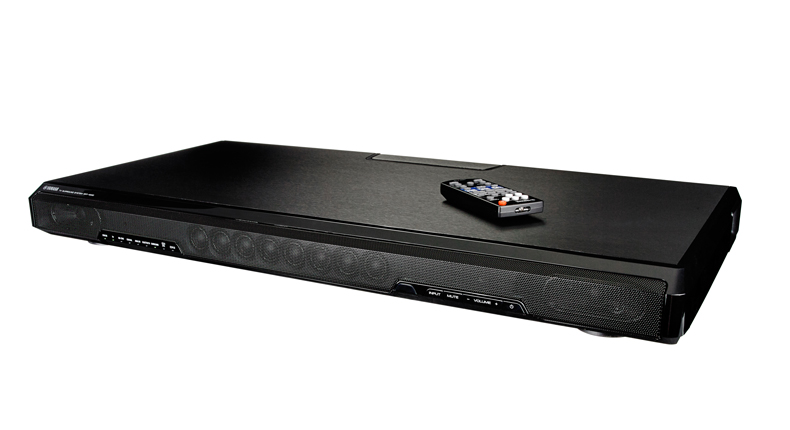What Hi-Fi? Verdict
The SRT-1000 is a good first soundbase from Yamaha, but some competitors deliver a more exciting sound
Pros
- +
Big, expansive sound
- +
Rich, solid bass
- +
Well featured
- +
Extensive setup control
- +
Detail levels largely good
Cons
- -
Midrange lacks expression and subtle detail
- -
No HDMI inputs
- -
‘Surround sound’ feature is very room dependent
Why you can trust What Hi-Fi?
The Yamaha SRT-1000 marks the company’s first venture into the burgeoning soundbase market.
Like Yamaha’s best soundbars, the YSP range, the SRT-1000 features Digital Sound Processing technology that aims to recreate the sound of a 5.1 surround sound system by bouncing beams of sound off walls.
This works to good effect in their soundbars, but can it be reproduced as well here?
Features
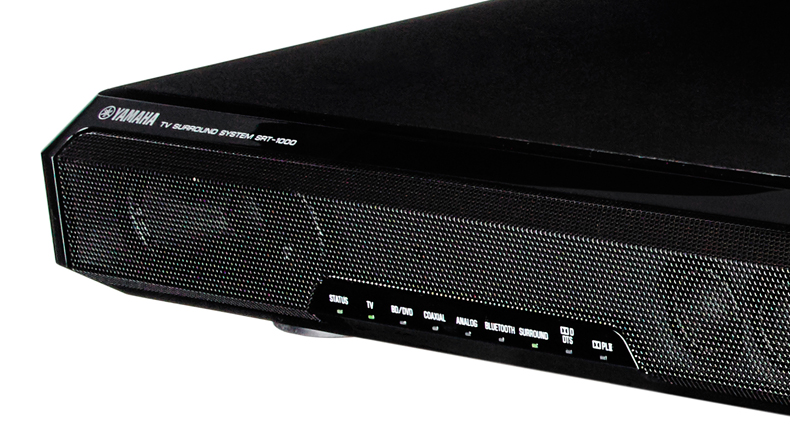
Taking the SRT-1000 out of the box, you can feel there’s been some care taken behind its build. Made from sturdy MDF to guard against vibration, it’s a solid bit of kit that will support TVs up to 55in and 40kg.
The metal grille on the front hides quite the array of speakers. There are a total of 12 drivers in the SRT-1000’s chassis, including eight 2.8cm beam drivers arranged horizontally in the middle, with two 4cm woofers in support and a pair of 8cm downwards-firing subs (each with an independent bass reflex port). All of that adds up to a total 136W of power.
Dashboard and app
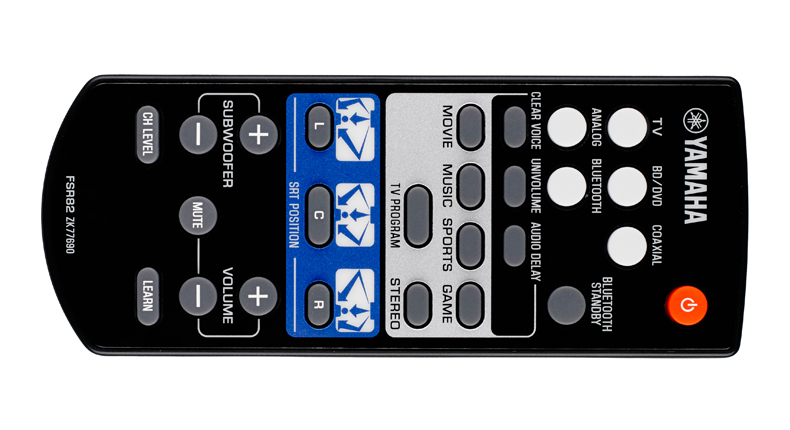
There’s no display on the front – instead Yamaha has gone with an arrangement of lights that illuminate to show your selected input and the audio format. However, these lights can also flash when making or confirming changes using the remote control – things such as the tweaking of the subwoofer levels or the changing of DSP modes and effects.
Trying to remember patterns of lights can get a little confusing to say the least, and we had to keep the manual near to be sure that we’d got our button presses right.
Much better is the Home Theatre Control app for iOS and Android, which is well worth a download. Giving you a much more visual idea as to the soundbase’s current settings and the changes you can make, it also allows you to enter more specific information about your room dimensions so the SRT-1000 can adjust its sound to suit.
Add to this the ability to tweak each individual channel using a series of test tones (you’ll need a sound level meter as there’s no auto calibration mic included here), and it’s an impressive level of control for a soundbase, even moreso one at this price.
Prefer to keep it simple? You can choose one of three listening positions on the remote instead to get your sound tailored to that, plus the Cinema DSP modes are there to shape the sound to your taste.
If you’d prefer not to use any processing, you should select “TV program”, but we find the Movie mode helps to deliver a richer, wider sound that really lends itself to watching films. We can’t say the same for the Music mode, which sounds really unnatural, and is really best avoided.
Connections
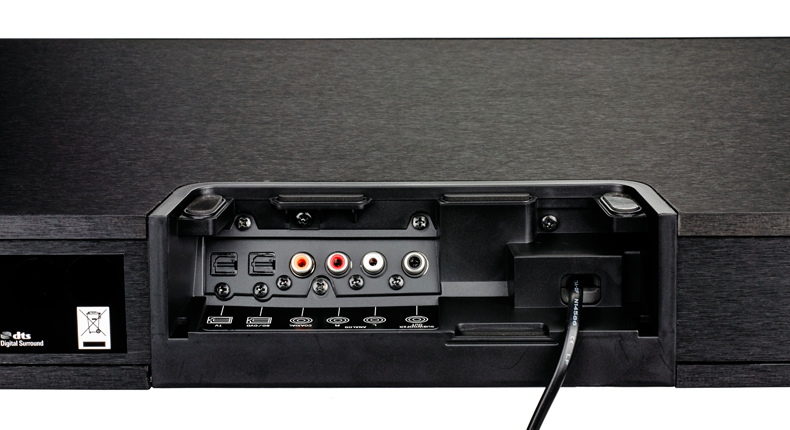
The Yamaha SRT-1000 is capable of decoding Dolby Digital and DTS Digital Surround and offers two optical ins, one coaxial, a pair of analogue inputs and a subwoofer out.
AptX Bluetooth is also supported, making this a pretty well connected box of tricks, though a couple of HDMIs for ultimate flexibility of connectivity wouldn’t have gone amiss.
Performance
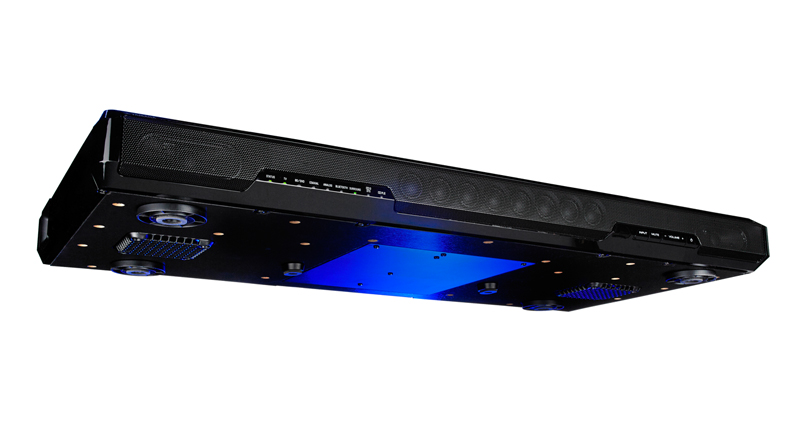
We load up the Tiger tank battle in Fury and the Yamaha dives straight into the action with a broad soundfield and muscular delivery. The bass is weighty and warm, with a deep, solid rumble to the tanks’ engines as they advance on the Germans.
As shots begin to fire, the heavy artillery blasts have power and punch behind them, while the zings of gunfire whizz across the soundfield with a convincing sense of movement and space.
The surround sound experience isn’t as convincing as we’ve found in the YSP models though – and while the sound it manages is big and wide enough, we don’t find it goes much wider than our listening position.
Its effectiveness will be hugely dependent on your room layout and, as our testing room is rather wide, we suspect you might get better results in smaller rooms, which is worth considering.
Tonally, the SRT-1000 is pretty open, with a treble that stays on the right side of bright at realistic volumes.
However, the Yamaha’s biggest weakness is in the midrange, which lacks the sparkle and excitement of the rival Canton DM75 or the Geneva Model Cinema.
Though the soundbase as a whole is pretty well detailed, some of that does roll off in the midrange, leaving things sounding a little flat and lacking in excitement. Soundtracks lose their impetus and drama, and dialogue isn’t as expressive as we’d like, particularly in busier scenes.
We find ourselves turning to Yamaha’s voice controls to give them a boost – this helps but it does have an effect on the dynamics either side.
Verdict
There’s a lot to like about the Yamaha SRT-1000 soundbase. We’re particularly taken with the level of control Yamaha has afforded the user– it’s unusual in this market and very welcome.
We love its powerful, expansive sound, but the SRT-1000 needs to be more subtle and expressive in the midrange in order to deliver an engaging, exciting presentation – and a cleaner treble would help the base’s solidity at volume.
It’s a strong first attempt from Yamaha at this new emerging market, but there are better all-rounders both above and below this price.
Read all our Yamaha news and reviews
MORE: Best soundbases 2015
What Hi-Fi?, founded in 1976, is the world's leading independent guide to buying and owning hi-fi and home entertainment products. Our comprehensive tests help you buy the very best for your money, with our advice sections giving you step-by-step information on how to get even more from your music and movies. Everything is tested by our dedicated team of in-house reviewers in our custom-built test rooms in London, Reading and Bath. Our coveted five-star rating and Awards are recognised all over the world as the ultimate seal of approval, so you can buy with absolute confidence.
